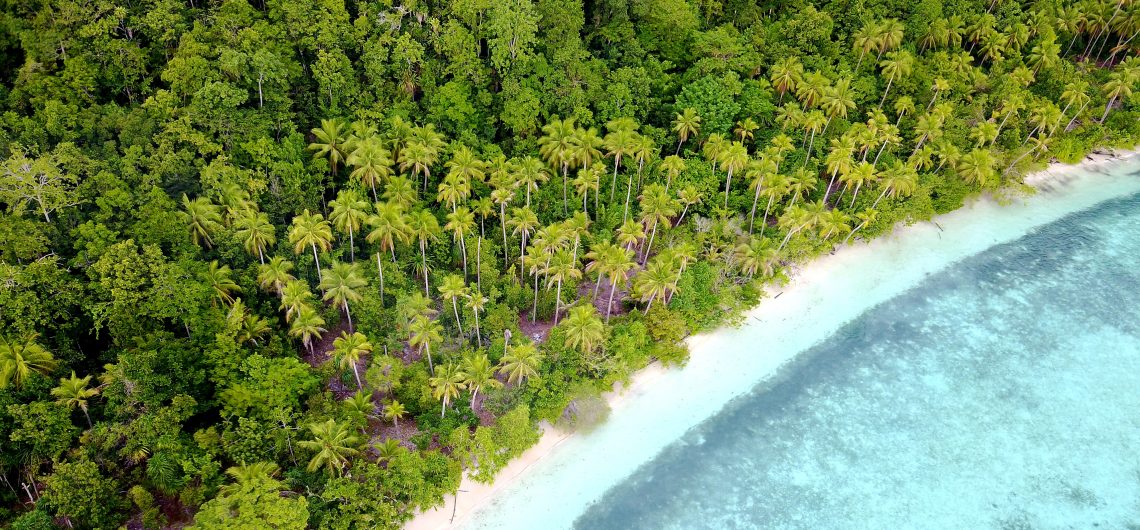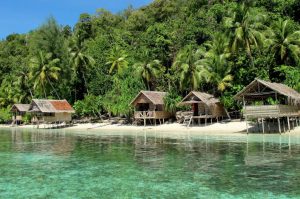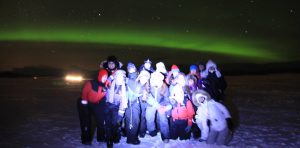The success of your trip depends heavily on the level of preparation. Madagascar is a wonderful destination for travellers who take the time to prepare& organise their trip well in advance. PASSPORT & VISA VALIDITY of passport required by the time of your travel to MADAGASCAR: 6 months and above TOURIST VISA is paying and can be obtained at Malagasy Consulates, or upon arrival to Madagascar, at customs. Indicative visa fee 35€/person, subject to change by authorities without prior notice. At least one blank page required in the passport for the visa. In Madagascar, IMMIGRATION issues are restrictive and may be amended by authorities without prior notice. Therefore, please kindly double-check all the conditions well in advance before departure. ADEQUATE TRAVEL INSURANCE AND ASSISTANCE A good travel insurance especially ensures your care in an emergency or unexpected situations such as health problems, accidents, cancellations, etc. Malagasy health facilities do not meet international standards. Therefore, medical evacuation to Mauritius, Reunion or South Africa is absolutely necessary in case of medical emergency. Therefore, we strongly recommend that you subscribe to adequate travel insurance before departure. Travel insurance protects you while giving you financial security and assisting you in case of emergency. SANITARY ADVICE Generally, we recommend that you have a medical consultation before your departure for health issues related to your stay in Madagascar and in particular on the issue of malaria. Please make sure that you update your vaccines, including diphtheria, tetanus, polio, typhoid fever, viral hepatitis A and B. We also recommend you bring along your own medication to relieve minor inconveniences associated with travel. Similarly, if you follow a specific treatment, it is important to plan your treatment during your stay. It is strongly recommended that you drink only bottled water during your stay (including for brushing your teeth),
The success of your trip depends heavily on the level of preparation. Madagascar is a wonderful destination for travellers who take the time to prepare& organise their trip well in advance.
PASSPORT & VISA
VALIDITY of passport required by the time of your travel to MADAGASCAR: 6 months and above
TOURIST VISA is paying and can be obtained at Malagasy Consulates, or upon arrival to Madagascar, at customs. Indicative visa fee 35€/person, subject to change by authorities without prior notice.
At least one blank page required in the passport for the visa.
In Madagascar, IMMIGRATION issues are restrictive and may be amended by authorities without prior notice. Therefore, please kindly double-check all the conditions well in advance before departure.
ADEQUATE TRAVEL INSURANCE AND ASSISTANCE
A good travel insurance especially ensures your care in an emergency or unexpected situations such as health problems, accidents, cancellations, etc. Malagasy health facilities do not meet international standards. Therefore, medical evacuation to Mauritius, Reunion or South Africa is absolutely necessary in case of medical emergency.
Therefore, we strongly recommend that you subscribe to adequate travel insurance before departure.
Travel insurance protects you while giving you financial security and assisting you in case of emergency.
SANITARY ADVICE
Generally, we recommend that you have a medical consultation before your departure for health issues related to your stay in Madagascar and in particular on the issue of malaria.
Please make sure that you update your vaccines, including diphtheria, tetanus, polio, typhoid fever, viral hepatitis A and B.
We also recommend you bring along your own medication to relieve minor inconveniences associated with travel. Similarly, if you follow a specific treatment, it is important to plan your treatment during your stay.
It is strongly recommended that you drink only bottled water during your stay (including for brushing your teeth), and eat only in restaurants recommended by your guide. Drink enough water to prevent dehydration and fatigue.
Remember to bring insect repellent and wear adequate clothing against mosquito bites.
Please make sure you protect yourself and your children from direct sunshine and dehydration. Sunscreens with high sun protection are also vital.
SECURITY ADVICE
Madagascar is a peaceful country with a nice, smiling and hospitable population. However, we must not forget that Madagascar is among the poorest countries on the planet. For a pleasant stay in Madagascar, simple safety measures and basic rules and common sense apply to all travellers.
While we travel around the world, we owe respect to other populations, cultures & customs. Let us not forget that tolerance and smiles open doors and make our world a better place.
CLIMATE CONDITIONS
In general, the climate in Madagascar is characterised by a dry season that runs from April to October and a rainy season from November to March. However, significant variations across regions are noteworthy: more moisture to the east, with a shorter dry season, and on the contrary a dry period with significantly prolonged heat waves in the south. Tropical storms and heavy rain may occur between November and March. Protection from sunshine, rain, cold and wind has to be taken into consideration while you pack. Please include a pair of good walking shoes to discover the national parks.
GOOD TO KNOW ABOUT HOTELS IN MADAGASCAR
Madagascar is one of the last paradises on earth resisting to the invasion of modernity and still offers opportunities for extra-ordinary travelling conditions.
Please kindly be advised that most accommodation options in the bush of Madagascar are often cut off from electricity & water networks and work on own power supply generators (solar or conventional). Often, bush hotels run on generator supply rationed in the day and into the night. In general, the generator is off from 22h on, after the guests return to their rooms after dinner. Similarly, the hot water may not be available throughout the hotel network.
Whatever itinerary you choose, we highly recommend you to bring your own torch lights to anticipate potential power cuts that can occur at any time on your route, in the bush as well as in the urban areas.
PACKING LIST TO DISCOVER MADAGASCAR & ITS NATIONAL PARKS
We strongly recommend that you bring a good pair of comfortable & robust walking/trekking shoes (solid sole to protect against falls, slippery collars and sharp stones), a headlamp/torch, a raincoat, a fleece jacket (depending on season and location), light and covering clothes (to protect you from cold, sun, scratches, insect bites, etc.), as well as hats and sunglasses. Nights can be fresh/cold in the bush and/or by the seaside, please include some warm clothes. A backpack is necessary to bring along with you your water bottle, camera, some cash money, sunscreen, raincoat/pullover and a small first aid kit to disinfect and treat minor injuries during the visit.
In some national parks, it is possible to swim in natural pools and / or waterfalls. We suggest you to inquire at your hotel reception before leaving the park to provide the necessary equipment for swimming.
Please also include your own mask and snorkel to enjoy marine reserves on your itinerary.
LUGGAGE ALLOWANCE AIR MADAGASCAR [DOMESTIC FLIGHTS]
On board of Air Madagascar domestic flights, luggage allowance is limited to ONE PIECE per person not exceeding 20 kg, and 5 kg cabin luggage per passenger. Respect this weight limit to avoid extra luggage fees. We highly recommend flexible and robust rolling travel bags, with security lock. Please try to avoid rigid, heavy and voluminous suitcases. Soft travel bags are easier to handle for road & boat transport.
CURRENCY AND EXCHANGE RATES
The local monetary unit is the Ariary (MGA or Ar), which in 2005 replaced the Malagasy franc (FMG). It happens very often that prices are given in Malagasy francs, ask precisely to avoid misunderstandings: note 1 MGA = 5 FMG.
Exchange rate 1 EUR = 3500 MGA (indicative rate). The official rate available on the website of the Central Bank of Madagascar, http://www.banque-centrale.mg/
While travelling in the country, make sure you bring some cash to exchange upon arrival and a package of small change between two cities. In the bush, you can only pay in cash except in important hotels where VISA card is widely accepted.
VISA AND MASTER CARDS
Important: In Madagascar, VISA is more widely accepted than MASTER. AMEX is not at all common. Commissions vary from one place to another.
There are ATMs and Exchange Offices in all major cities. The eventual settlement of hotel extrasby card as well as cash with drawls are subject to commissions and charges ranging from 5 to 8%. Please contact your bank for detailed information.
TIPS
You can give a tip if you are really satisfied with the service. In restaurants, it is customary to leave 5 % service charge, but it is at your discretion. If you rent a car with a driver, you can give a tip of few Euros per day (about 5 € per day).
TELECOMMUNICATIONS
Various mobile operators provide communication & Internet services in Madagascar. It is possible to buy a prepaid SIM card from one of the operators and use the national network configuration if your phone allows.
POWER SUPPLY
European / French type of sockets are in used, with 220 V powers, when available. Power cuts are very widely experienced in major cities. There is mostly no power network in the bush and most hotels run on power generators or solar panels. Power generators run mostly until 10 or 11 p.m. in case of solar power, please do not use electric hair dryers. Please kindly ask information and assistance at the reception of each hotel.
We strongly recommend you bring a headlight or torchlight with enough spare battery per person for night use in bush hotels.
CHECK OUT NEXT TRIPS
Future Trips
Videos on Youtube
https://www.youtube.com/channel/UCzrx00_t6B55x11lM87AEFw
For more photos on Instagram
https://www.instagram.com/myescapetonature/









